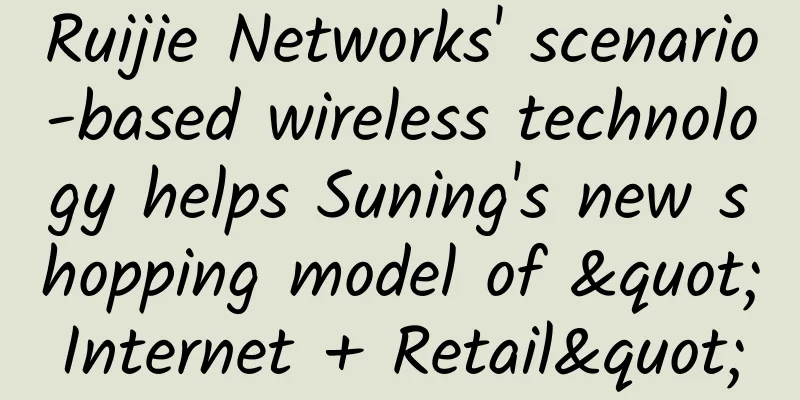3 ways to do next generation network migration correctly

|
They say that in travel, getting to your destination is only part of the fun of the journey. But in a network migration, getting the migration done is the key purpose of the entire process.
The next generation of open networks may be a broad and rapid revolution, but the huge value of the existing network infrastructure and the huge risks of large-scale technological changes make classic fork upgrades impractical. We need to advance the next generation of network migration in small steps, and the main options currently include: network layer approach, geographic approach, and service-oriented approach. Hierarchical Network Migration Approach From a technology perspective, the most logical approach to network infrastructure and modern operations is layered. The famous OSI model says that the service network consists of physical layer 1 (optical); layer 2 for data link services, including carrier-grade Ethernet; and layer 3, which is typically the service layer for IP. Operators typically think of the network in terms of transport and connection layers. If you want to modernize your operations, you should start at the top or the bottom of the stack. Optical and data link equipment has one task: to carry traffic reliably. It does not become obsolete due to changes in market requirements, so installations usually have a long service life. On the other hand, in many networks (including mobile infrastructure), optical transmission is regularly added to increase transportation capacity. Each additional deployment is an aspect of considering technological changes. Since the lower layer does not actually provide services to users, differences in technology have no impact on the service itself. The lower layers also account for considerably less of the network operator's operating expenses, since they focus on aggregating traffic, rather than connectivity and services. Operational processes actually cost operators more than capital equipment, and most network operating costs are associated with services, which occur at the top of the OSI stack. So, if next-generation networks are driven by the need to reduce Opex, it makes sense to start at the top, where most of the exposure is. But does a layer-by-layer migration model make sense? Sometimes it does, sometimes it doesn’t. There are cases where bottom-up and top-down migration will be the best approach, but there is no clear answer here. Geographic Network Migration Methodology It is also possible to think about next generation network migration by geography. Service consumption is not uniform across all markets and varies greatly even within specific countries or market regions. Areas of high demand generate more revenue for operators and create more demand to change or add technology. Since there is more infrastructure development in high demand areas, the introduction of new technologies will change the ratio of total capital expenditure and operating costs. Management centers are often divided geographically, and since troubleshooting is difficult in this case by requiring operations staff to use different management/support systems, it makes sense to target modern geographic areas while changing both equipment and operational practices. However, one difficulty with this approach is that business services, in particular, span multiple regions. This carries the risk of having some sites serving customers using legacy technologies, while others use next-generation network technologies. The lack of a homogeneous infrastructure means that customers may not see the same service attributes across all sites, or be able to use common customer management practices. Therefore, for multi-business services, a geographic approach is critical. Service-based network migration approach The final option is to consider migration to the next generation network via services. We have seen network function virtualization (NFV) first deployed in hosted VPN/VLAN service applications, and early applications of SDN deployed in the cloud. With the regular introduction of new service types, such as managed services, the move to next generation technology is a particularly good idea because there are no previous customer experiences or operational practices to consider. Another area where the bypass service model of next generation network migration has been applied is mobile services. Mobile services are the most profitable business for network operators and the fastest growing business. These combined make mobile infrastructure the focus of investment for more and more operators, which means there is an opportunity to introduce next generation technologies generated every year. Most of the changes in mobile infrastructure technology are concentrated in the IP Multimedia Subsystem and Evolved Packet Core elements, which are not directly visible to customers. Both have well-defined interfaces, and any technology that complies with the specification is interchangeable with any other. The core issue with service-based transformation is the scope of its impact. Unless the service has a very limited customer base, changing technology is likely to affect the entire scope of infrastructure and operations. This will force operators to return to the fork upgrade they wanted to avoid, or fight with technical support staff with two different infrastructure models throughout the evolution. Making practical next-generation network migration decisions So what is the solution? Service-based approaches are most popular, especially for managed business services and mobile infrastructure. For managed services, any customer-visible changes involve the fact that the customer explicitly changes the service, while in mobile infrastructure, these changes are mainly in the lower network layers that are not directly visible in the service itself. But the real lesson is twofold. First, there is no strategy, or even a combined infrastructure evolution strategy, to quickly move networks to the new era. Second, the diversity of approaches to next-generation network migration virtually ensures that individual parts of the network and services will evolve under their own local cost/benefit drivers. Somehow, these approaches all end up pointing to capital and operational approaches or inefficiencies that will slow progress. |
<<: 5G meets WiFi on a narrow road, walking hand in hand in a friendly way
>>: Why 5G needs network slicing and how to implement it
Recommend
Communication Protocol I2C Subsystem I2C Driver
Now let's write the I2C Driver part. The I2C ...
spinservers: $109/month - 2*E5-2650L v3 CPU, 64G memory, 1.6T SSD hard disk, 10TB/10Gbps, San Jose data center
If you need a high-end server, you can also take ...
Cool down the false millimeter wave! Adhere to the road of confidence and look at the millimeter wave rationally
Last year, a manufacturer raised a very interesti...
The number of 5G users of South Korea's three major operators has increased, but the network quality has received a lot of complaints
According to data released by market tracker FnGu...
Inventory: Major network communication events in the first half of 2020
In the blink of an eye, half of 2020 has passed. ...
HostYun UK London AS9929 line VPS host 10% discount monthly payment starting from 22.5 yuan, native IP
Those who are interested in UK VPS can pay attent...
OneTechCloud VPS quarterly payment 20% off starting from 64 yuan/quarter, US CN2 GIA/CN2 High Defense/Hong Kong CN2/Japan CN2 and other lines
OneTechCloud is a Chinese hosting company founded...
5G mobile phones are coming! Who will be the next Nokia?
"With 43 million analog mobile phone users, ...
5G, cloud computing, IoT and edge computing complement each other
Recently , the Ministry of Industry and Informati...
ThomasHost: $5/month KVM-2GB/50GB/1G port unlimited traffic/6 computer rooms available
I searched and found that the blog shared informa...
EBS Lens, a powerful tool for block storage monitoring and service stress testing and tuning, is released
EBS Monitoring Status Block storage is a block de...
Detailed discussion of RDMA technology principles and three implementation methods
[[385738]] Remote Direct Memory Access (RDMA) is ...
5G accelerates the energy revolution, and future development trends are becoming increasingly clear
In today's world, the importance of energy is...
The basics of optical fiber you must know
1. Classification of optical fiber Optical fibers...
What does the battle for AI spectrum mean for 5G?
With the rapid development of smart cities, every...









